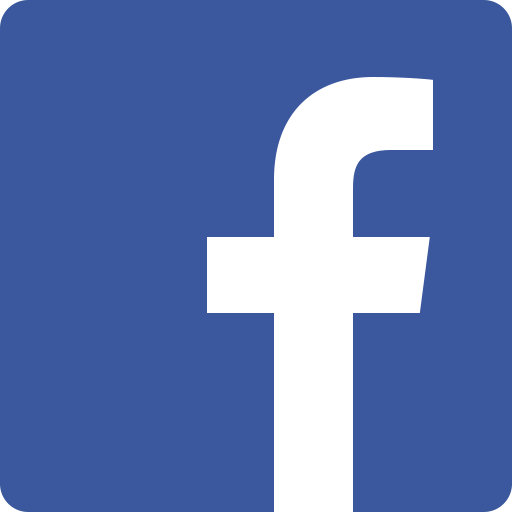This week, guest blogger and CNSPY member, Dianna Bartel, continues to share her thoughts on effective communication. As a follow-up to last week’s post about speaking and conveying our messages clearly, this week she focuses on the other half of communication – listening. Here’s Dianna:
Communicating is a give and take endeavor. To actually communicate we need our listeners to understand what we are saying. Otherwise we are just talking. So expressing our thoughts to our listeners is only half of the equation. The other half is listening to what our audience communicates back to us.
We usually focus far more on the speaking side of the communication chain compared to the listening side. And after we explain our imperative ideas, we look to our audience for indications that they understood. But if we cannot hear what they have to tell us, it really won’t matter how clearly we think we are speaking.
“We were given two ears but only one mouth, because listening is twice as hard as talking.” – Epictetus, Greek philosopher
Almost all of us sincerely believe that we are good listeners. Consequently, we do not think we need to further our listening skills. But in fact, listening effectively is something few us do. Not because there is anything particularly difficult about listening, but we have just never developed the habits to really tune in attentively. Perhaps listening skills are even more in danger in this golden age of information, where we continually maneuver through an endless hum of info by tuning-out, not tuning-in.
Listening isn’t simply something that happens (that is hearing). Rather, listening requires conscious thought to truly comprehend the message, which is precisely what we hope our audience is doing while we are talking. When it’s our turn to listen, we need to mirror the responses we look for from our audience. It’s a golden rule of communication – do unto to others as you wish to be done to you.
So let’s reconsider several points we have visited as speakers, but now from the vantage point of listeners.
Non-Verbal Listening
Just as the speaking side of communication is an active endeavor, so too is listening. As active listeners we cannot be distracted. Which means no fidgeting, looking at a clock, biting our fingernails, doodling, shuffling papers, or worst of all, checking our phones.
Beyond focusing fully on the speaker we need to actively show signs of listening. It is normal and usually encouraging as a listener to make eye contact with the speaker. This is perhaps the most direct signal of our fixed attention. Combining eye contact with smiles and nods of the head are powerful affirmations that we are getting the message.
Our posture also signals our state of concentration. Attentive listeners tend to lean slightly forward or sideways while sitting. Other signs of active listening include a slight slant of the head or resting the chin on one hand.
Use these strategies to not only convey to others that you are indeed listening to them, but also to help you listen more attentively – these postures and behaviors inherently prevent fidgeting and phone-checking and encourage eye contact and attentiveness.
Verbal Listening
It is perfectly possible to mimic all the non-verbal signs of active listening and not even hear a word that is said, let alone grasp the message. It is far more difficult to imitate verbal signs that we really comprehend something.
Although positive words of encouragement, such as “very good,” “indeed,” and “absolutely,” can be beneficial, we should use these sparingly so as not to distract from what is being said. It is usually better to remember the key points and summarize what we have understood when the speaker has finished their thought. This also allows us to reflect on the entirety of what the other person has said.
It is often the case that we hear what we expect to hear, so it is important that we do not introduce our own ideas or questions. In other words, we should put aside our own agendas (yes, most of us listeners have them). The goal is not to ask leading questions or spin off into what seems like a response but is actually just a way for us to get our own ideas across, be recognized for our amazing opinions, or have our own feelings acknowledged. Remember, we are focused on what the speaker just said so we want to use our own words to summarize what we heard. Paraphrasing not only shows that we are listening but that we are truly trying to understand their meaning.
In sum, we simply cannot go wrong by showing interest in what other people say and making them feel important. In other words, the better we listen, the more we will be listened to.
** It’s our turn to listen, let us know what you think about the other half of communicating. **
Share your thoughts below by clicking the “Leave a Reply” link or by clicking the chat bubble in the top right of






April 22, 2015 at 3:50 pm
As I am attending a conference this week I will keep in mind this timely advice!
April 22, 2015 at 4:19 pm
Excellent – plenty of opportunity to put listening skills to work there! It’s always challenging during longer talks and seminars; even with our best efforts we inevitably we tune in and out to an extent over the course of an hour.
Have a great conference, Arie!
April 22, 2015 at 4:11 pm
Another great essay from Dianna. With extraordinary simplicity, Dianna describes what it is -at least for me- one of the greatest challenges in scientific communication: Listening. I will put it in practice from now on. Thanks! and I look forward to your next article.
April 22, 2015 at 4:25 pm
Indeed, I agree. Listening is often regarded as the most difficult aspect of communication. It really is hard for us to put our agendas aside. Maybe because it’s impossible to be entirely objective, everything we experience is subjective to our own point of view after all. A bit philosophical but true!
Thanks for communicating with us, Diego!
November 10, 2016 at 2:17 am
really good articles and helped us all the information and knowledge.
January 6, 2023 at 1:15 am
WaterOutPhone is the best technique and most efficient one to pull out water out of phone’s speakers.
WaterOutPhone is Free and easy to use tool, it can guarantee you a good job in expelling water out of your phone. With WaterOutPhone, you don’t worry if your phone fell in water.
https://www.wateroutphone.com
January 6, 2023 at 5:41 am
Did you drop your phone in the pool? toilet? Leaving water inside your speaker can harm your speaker and all your phone hardware.
Don’t worry, we have the solution for you to repair your speaker and iphone!
Sound to get water out of phone for a speaker fix
https://www.wateroutphone.com
January 7, 2023 at 4:48 am
Did you drop your phone in the pool? toilet? Leaving water inside your speaker can harm your speaker and all your phone hardware.
Don’t worry, we have the solution for you to repair your speaker and iphone!
Sound to get water out of phone for a speaker fix
https://www.wateroutphone.com
February 3, 2023 at 1:21 am
Cheap diablo 4 gold at https://www.diablo4golds.com/
February 17, 2023 at 3:04 am
He emphasizes that industry is looking for problem solvers and whether you have prior industrial experience won’t affect your standing as long as you can prove with examples that you can and have solved problems before!
https://www.mywatchesuk.com/
September 4, 2023 at 9:26 pm
L’origine del termine orologi imitazioni “Rolex” non è chiara. Wilsdorf non lo ha mai confermato, e secondo alcuni deriverebbe dalla locuzione francese “horlogerie exquise”, che significa “alta orologeria”, mentre secondo altri la parola sarebbe stata scelta per essere usata in qualsiasi lingua di facile pronuncia.
November 10, 2023 at 3:31 am
Wilsdorf & Davis era il nome originale dell’azienda che in seguito divenne la repliche rolex Watch Company. Inizialmente, si limitavano a importare nel Regno Unito meccanismi svizzeri prodotti dal loro successivo partner Hermann Aegler, assemblandoli in lussuose custodie create dal marchio Dennison e da altri gioiellieri che vendevano i primi orologi dell’epoca e utilizzando i propri L’orologio trasporta un marchio personalizzato.
March 25, 2024 at 4:05 pm
I want to express my appreciation for your hard work to compile these blog. Reading is my sparetime hobby. Namaste